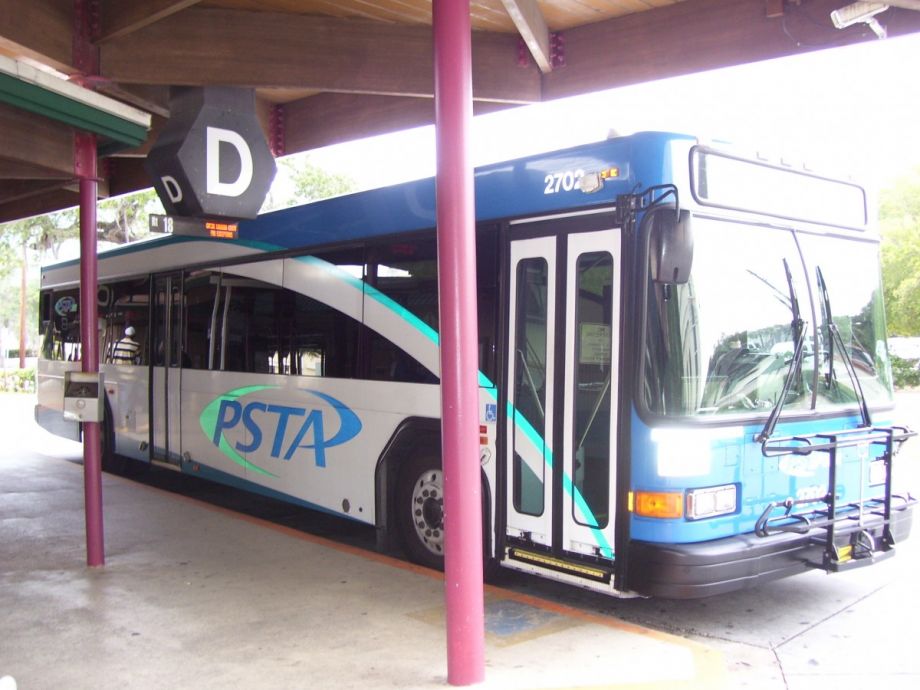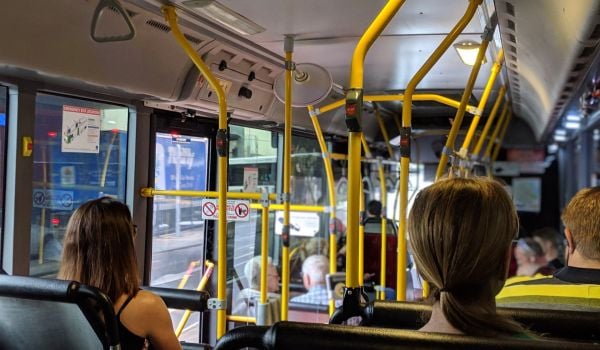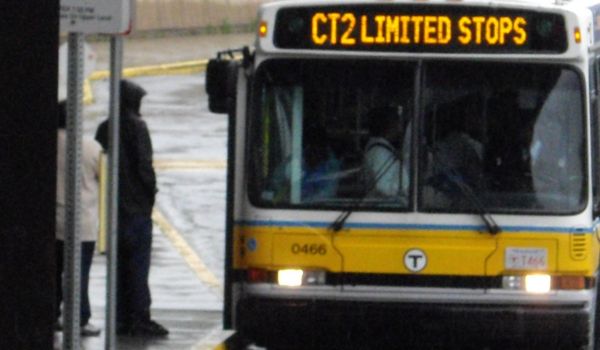In St. Petersburg, Florida — a city of about 257,000 residents sitting on the Gulf Coast next to Tampa — people have just a few options for getting around town. They can, of course, drive personal cars, walk or bike; catch a bus operated by the Pinellas Suncoast Transit Authority (PSTA); or hire taxis and Ubers. From February to August this year, the last mode choice on that list was likely the cheapest, most efficient option for accessing the bus. In an effort to encourage transit ridership and alleviate the impact of service cuts brought on by budget woes, PSTA was subsidizing 50 percent of the cost of taking rides with Uber, United Taxi (the local cab company) or Care Ride (a paratransit service) if those rides were connecting to the bus.
That sort of partnership between public transit agency and ride-hailing company isn’t yet common, but examples are popping up around the country as cash-strapped municipalities look for ways to supplement their bus and rail routes and better serve low-density areas with so-so transit ridership. Those in favor of the arrangement say taking advantage of new technologies and service providers is a win-win for forward-looking transit agencies. Skeptics caution that the things that make companies such as Uber and Lyft profitable are incompatible with transit agencies’ obligation to provide quality, convenient, equitable service.
The partnerships and their potential strengths and shortcomings are also the focus of a new report from TransitCenter, a transportation research foundation in New York City. “Private Mobility, Public Interest” looks at case studies around the U.S. and draws on interviews with over 100 representatives from the public and private transportation industries to analyze the current state of urban mobility and recommend how transit agencies can best leverage their assets to take advantage of opportunities presented by transportation network companies (TNCs), car-share and bike-share.
“We think that because of simple math and geometry, companies like Lyft and Uber are not replacing public transportation systems,” said Jon Orcutt, TransitCenter director of communications and advocacy, in a telephone press conference Wednesday. “But they can provide complements in a variety of settings.”
The report’s core message: The transportation landscape is changing incredibly fast, and public agencies and municipalities are well positioned to use the new technologies to their advantage, rather than get undercut by them.
Partnering with “emerging mobility providers” — Uber, Lyft, Bridj, Car2Go, Zipcar, bike-share and many others — can lead to better first mile/last mile service as well as reach in low-density areas poorly served by fixed routes. In addition to St. Petersburg’s pilot project, the report looks at an Uber partnership in Altamonte Springs, Florida, and a Bridj partnership in Kansas City.
“The core idea is to save money on bus routes that are very expensive for [an] agency to operate [in low-density areas], but still provide comparable service on those routes,” explained Zak Accuardi, TransitCenter program analyst, on the press call. “They can then use that extra funding to reinvest in other parts of system.”
Beyond a chance to better service difficult routes, the partnerships could have other benefits for transit agencies including access to the troves of data collected by the emerging mobility providers that could help improve future planning, and streamlined technologies such as transit planning apps with in-app payment systems. TransitCenter also points out the private companies are often in a better position to parse data or implement new tech than agencies. In order to take advantage of all those benefits, transit agencies need to recognize their assets and set strict terms of the partnership.
The private companies are, of course, enticed by increased business and subsidies from public agencies. But they also rely on public roads, and public parking to function. The report points to the San Francisco Bay Area as a success story. San Francisco Municipal Transportation Authority leases park-and-ride parking spaces to car-share companies when they can demonstrate they’re generating more transit trips per space per week than a private car. In Seattle, Car2Go traded customer trip data and an agreement to rebalance its fleet evenly through the city in exchange for having no cap on the number of cars in the system.
Mariah Montgomery, a strategist with the Partnership for Working Families, recognizes the need for transit agencies to adopt on-demand transit and new technologies, but is skeptical public-private partnerships are the best path forward.
“Transportation network companies do not adequately serve people with mobility issues or disabilities, and you can’t use it if you don’t have a bank account or smartphone,” says Montgomery. “Also, there’s a risk they’re competing with transit. If you draw people off transit, especially those who can afford to pay a premium, it could further segregate out public transportation.”
The question of whether or not Uber and its ilk are drawing people off transit remains to be fully answered. “More research is needed to understand this dynamic,” says Susan Shaheen, co-director of UC Berkeley’s Transportation Sustainability Research Center. “One of our studies on round-trip car-sharing found that it had a neutral to negative impact on public transit ridership. For every five members that used rail less, four used rail more, and for every 10 members that took the bus less, almost nine took it more.”
Accuardi acknowledges the equity issues posed by the private sector. “ADA accessibility is a major issue and one that remains to be addressed in a really meaningful way [by emerging mobility providers]. And the other overriding equitability challenge is affordability. This is not a substitute for providing affordable service to the people who depend on it most.”
But he points to St. Petersburg as an example of a transit agency setting the terms to help address some equity concerns. By partnering with Uber and United Taxi, PSTA was able to offer subsidized trips from midnight to 9 a.m. to help overnight workers. They’re also working with Uber to implement a phone dispatch service for residents without smartphones.
The public and private sectors have fundamentally different goals. Emerging mobility providers exist to turn a profit. Public transit agencies exist to provide high-quality, equitable transportation. Accuardi thinks that potential rub can be overcome if transit agencies take the lead.
“There are real tensions, and it’s the obligation of the public sector to avoid them,” he said. “If municipal governments and city transportation agencies are really proactive about setting the terms of relationships, they can avoid the pitfalls.”

Josh Cohen is Crosscut’s city reporter covering Seattle government, politics and the issues that shape life in the city.
Follow Josh .(JavaScript must be enabled to view this email address)
















